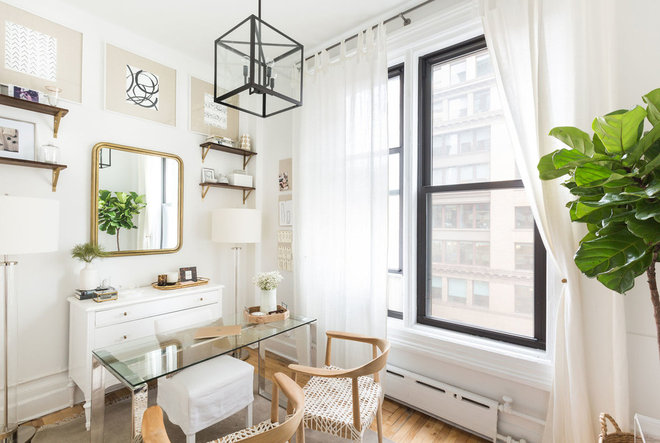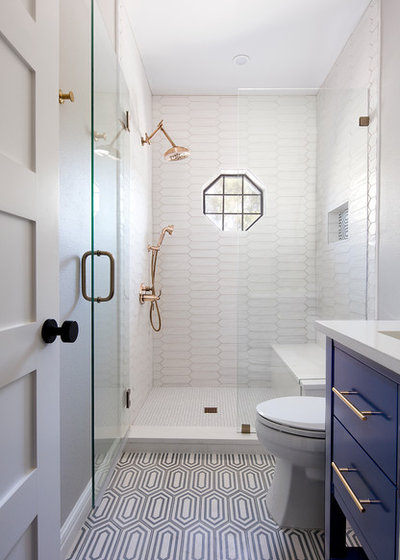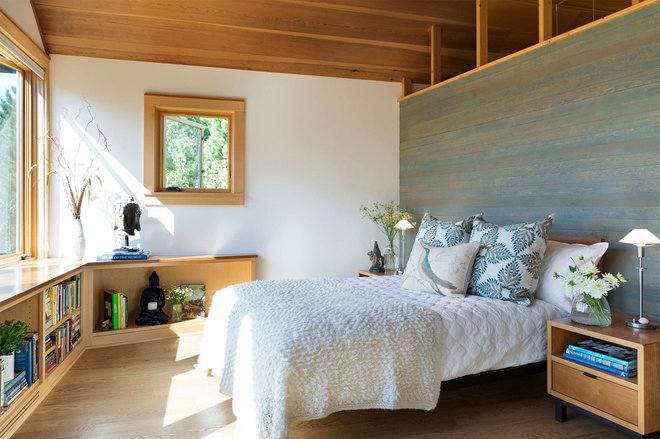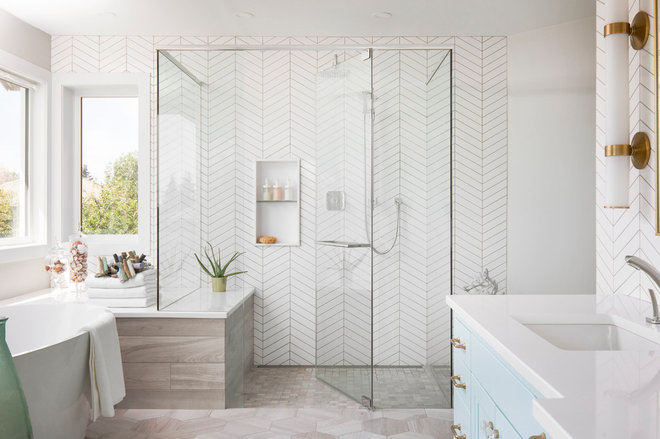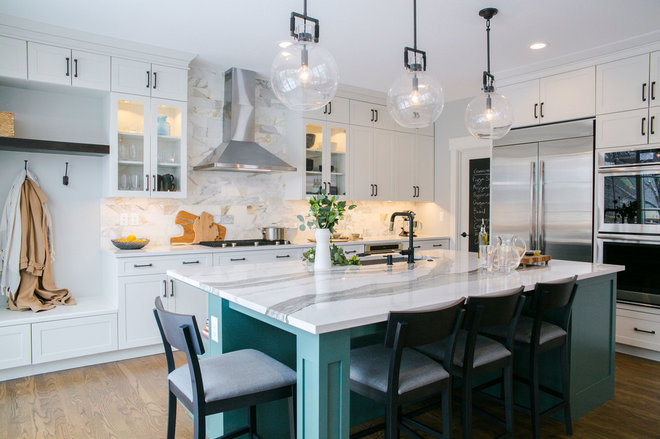March Motivation: Advice for Rebooting Your Home Projects
When you think about your stalled-out project, what problem or issue comes to mind first? If you’re having trouble pinning down the reason for the roadblock, it may help to think about it in terms of phases of work. Here are a few examples of issues that can crop up at each stage of the process.
- Big-idea stage: Indecision or disagreement about the vision or project scope
- Preparation stage: Trouble deciding exactly what you want; budget issues
- Team-building stage: Difficulties in hiring the right pro (or pros) for the job
- Planning stage: Team communication breakdown; decision fatigue
- Construction stage: Delays; miscommunication; feeling generally overwhelmed
Once you can name the main reason your project got put on the back burner, it’s time to pick one small task that can help get things back on track. Choose something that feels straightforward and doable. Create a Houzz ideabook, call your architect or sit down with your partner to discuss the project.
Next, let’s look at a few common reasons projects get derailed, plus ideas for first steps to get them back on track.
Find an architect in the Houzz pro directory
Even in a relatively “small” project, the number of decisions required can be truly mind-boggling. If you were up to your eyeballs in paint swatches and fabric samples and just couldn’t take it anymore, it’s no wonder — our everyday lives are already filled to overflowing with decisions to be made! Once you’ve had a chance to do some deep breathing, a good first step before you dive back into your project is to get organized.
First step: If you are working with a designer, let him or her know that you are feeling overwhelmed by the sheer number of decisions involved in the project — the designer should be able to help with that. Whether you’re working with a pro or tackling the project on your own, it’s equally important to keep all your project details in one place. Whenever you make a decision, record it. There’s nothing more frustrating than needing to decide something all over again because you forgot what you decided on!
10 Signs You’re in the Middle of a Renovation
Tackling a design project as a couple can be exciting, but rare is the couple that can agree on all the decisions involved. If you and your partner have reached an impasse, a cooling-off period can sometimes be helpful. But when you’re ready to get back in the game, it should be with an attitude of collaboration and compromise, and that means on both sides.
First step: Try making separate Houzz ideabooks and then get together to share your likes and dislikes in a joint brainstorming session. If you’re working with a designer, this can be a good time to allow the pro to step in with potential compromises too.
How to Remodel Your Relationship While Remodeling Your Home
If you have a really ambitious vision — completely remodeling your home, say, or adding a second story — the magnitude of the task you are undertaking has the potential to overwhelm you. First, figure out what’s most upsetting you. Is it the idea of staying in your home while work is going on? If that’s the case, consider looking into options for places to stay so that you can ride out the messiest phase of construction in a calm and peaceful environment. Another option can be to break down your big goal into several smaller projects, in which case you may want to look into whether phased construction is right for you.
First step: Do some online research and talk with friends and neighbors — is there a place you can stay locally while construction is going on in your home? Shorter-term rentals like Airbnb, housesitting or staying in a trailer or RV on your own property are potential options to consider.
Should You Stay or Should You Go for a Remodel? 10 Points to Ponder
Perhaps you started a remodeling project thinking that it would be simple enough to do without an official project manager — only to realize that managing the mess, schedules and personalities of multiple workers and specialty contractors is draining and difficult. If your project felt as though it was spiraling out of control to the point that you just shut it down, it may be time to get some expert oversight.
First step: If you don’t have a project manager yet, it’s probably time to hire one. Depending on the type of home project you are working on, your project manager could be a general contractor, interior designer or architect.
Find a local pro on Houzz
Whether your financing fell through or other issues have come up in your life that require a major rethinking of the budget, it’s important to be realistic and honest about what you can afford. This is a common problem and not something you should feel bad about. Just take a deep breath, get a full picture of what finances are available to you and make a plan to move forward.
First step: To get your project going again, plan a sit-down with your designer with the intended purpose of looking for creative ways to reduce the overall cost. You may be able to approach the project in several phases, allowing you time to save up before moving to the next phase. Or your designer may be able to suggest alternative materials and finishes or other changes that would still serve your needs without breaking the budget.
Design Workshop: Is a Phased Construction Project Right for You?
Whether it’s a building permitsnafu or an engineering issue, when major road blocks hit, they can derail the entire project. When you’re ready to get back on track, first determine if you have the right pros on your team.
First step: If the project is going nowhere, getting a pro with the right type of expertise on the case can open up new possibilities. For instance, perhaps you need an engineer or an architect when you thought you needed just a general contractor.
Which Home Professional Should You Hire for Your Project?
Communication issues are a common gripe during home projects. And while a few minor miscommunications are nothing to be overly concerned about, if the errors are happening often or affect vital parts of the project, it’s important to get proactive.
First step: Make a written list of your questions and concerns. The next time you have a phone call or a meeting (even an informal one) with a member of your design team, be sure to write down the responses in the same place. Another good practice is to repeat back what you heard, just to be 100 percent sure you are both on the same page.
